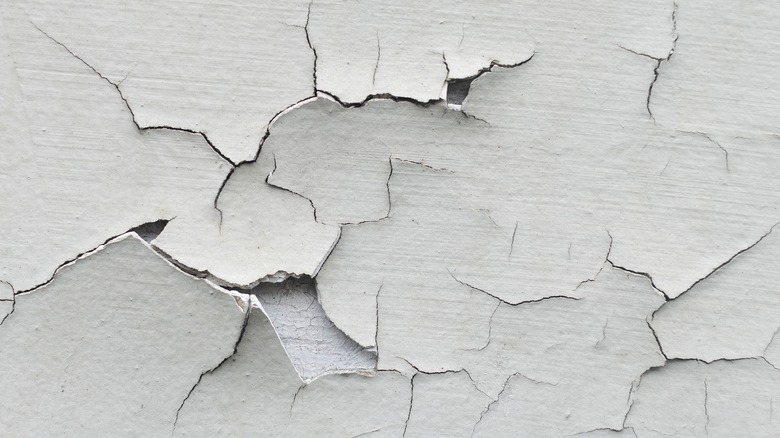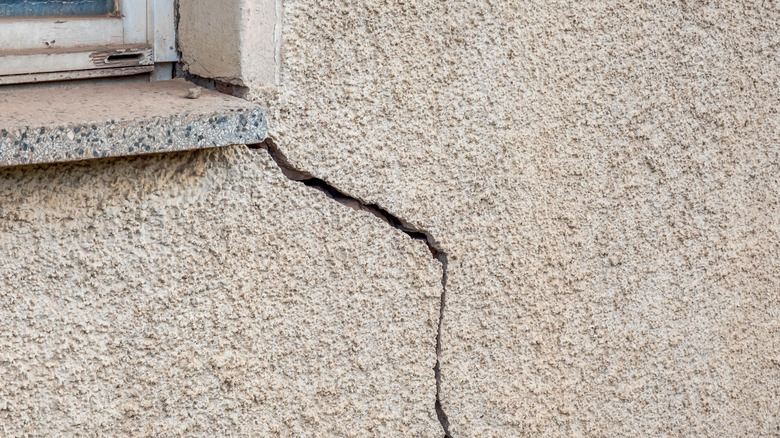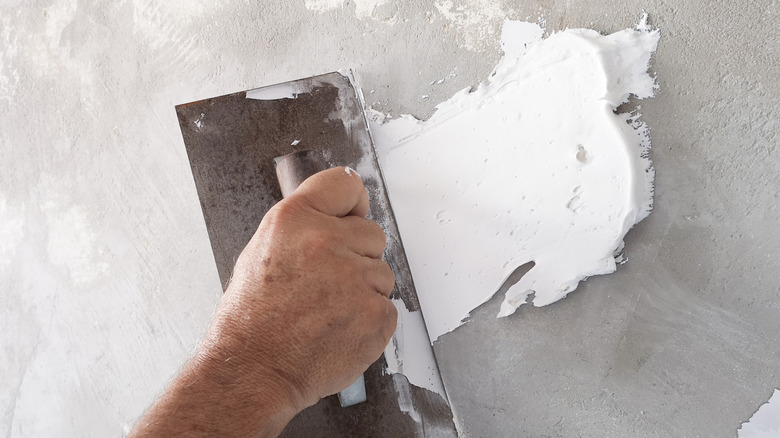Here's When And How You Should Repair Stucco
Admiring the breathtaking beauty of your stucco-clad home, you suddenly spot a bold crack or audacious hole daring to ruin your otherwise flawless façade. Well, it's time to give your stucco the TLC it needs. So, when exactly should you repair stucco? The simple answer is as soon as you notice any deterioration, including cracks, holes, and water damage. As for how to repair stucco walls, the steps vary with the type and extent of damage. For minor fixes, grab your stucco repair kit, channel your inner DIY warrior, and work to restore your home's exterior to its former glory. However, major stucco repairs are best handled by a professional.
Stucco has been around since ancient Greek and Rome. The beauty of this low-maintenance material is that it can mimic different textures and finishes besides having excellent insulating properties and resistance to fire and moisture. But stucco isn't entirely immune to the ravages of Mother Nature and Father Time. And while you may be tempted to dismiss some stucco imperfections as cosmetic flaws, beware. It might start small but can escalate into a full-blown catastrophe later. By keeping up with stucco maintenance, you can catch issues early and prevent more severe and expensive damage.
When to repair stucco or call an expert
If you're starting to notice damage on the surface level, don't wait any longer. An immediate fix can prevent moisture penetration and the consequential effects — think peeling paint, mold, and wood rot. But before you dive into repairs, ensure no mold or moisture lurks beneath the surface. If you encounter these issues, it's time to consult a stucco remediation expert for a complete overhaul.
Whether to tackle stucco repairs yourself or involve a professional depends on the nature of the cracks on the stucco surface. First, we have hairline cracks, usually less than 1/16 inch wide and quickly fixable with some DIY spirit and a steady hand. Spider cracks are hairline cracks that mimic a spider web and are often attributable to improper curing. They don't usually pose a structural threat but can be unsightly and may allow moisture to penetrate the stucco. Luckily, you can DIY repair spider cracks easily and fast.
Now, let's talk about diagonal cracks. They are broader and deeper and typically run diagonally near windows and doors. They signify structural shifts and demand professional assessment of your property's integrity. Finally, you might face pattern cracking, which manifests as a grid. If it's a small area, the gaps can be DIY-fixed using caulking. But professional intervention will suffice if the lines escalate into a complex maze.
How to repair stucco like a pro
The procedure to repair stucco varies depending on the damage's nature. If you're dealing with thin hairline or spider cracks, first brush or vacuum any loose material from the gap. Using a caulking gun, fill the crack with a high-quality, paintable stucco repair caulk. Smooth the caulk with a putty knife or finger, and let the material dry according to the manufacturer's guidelines. For wider cracks, a factory-prepared stucco mix will suffice. Apply the patch in multiple layers using a putty knife or drywall trowel, letting each layer dry before adding another. It's recommended to tackle this project in 50 to 90 degrees Fahrenheit weather for the best results.
Caulk should seal small holes. But if you want to repair large stucco holes? Start by cleaning the void using a brush so no loose debris sabotages your repair efforts. Then, apply a layer of fiberglass mesh over the hole to create a sturdy base for the new stucco. Whip up a batch of patching concoction and use a rubber float or masonry trowel to apply a 0.25-inch-thick layer to the hole. Multiple layers are required to achieve the desired thickness. Be patient, as you must allow each coat to dry and cure — you wouldn't want your new stucco to crumble under the weight of your eagerness. Finally, texture the finish coat using a damp sponge or cloth to create a cohesive look. If not, paint the entire stucco exterior when the top layer cures.


